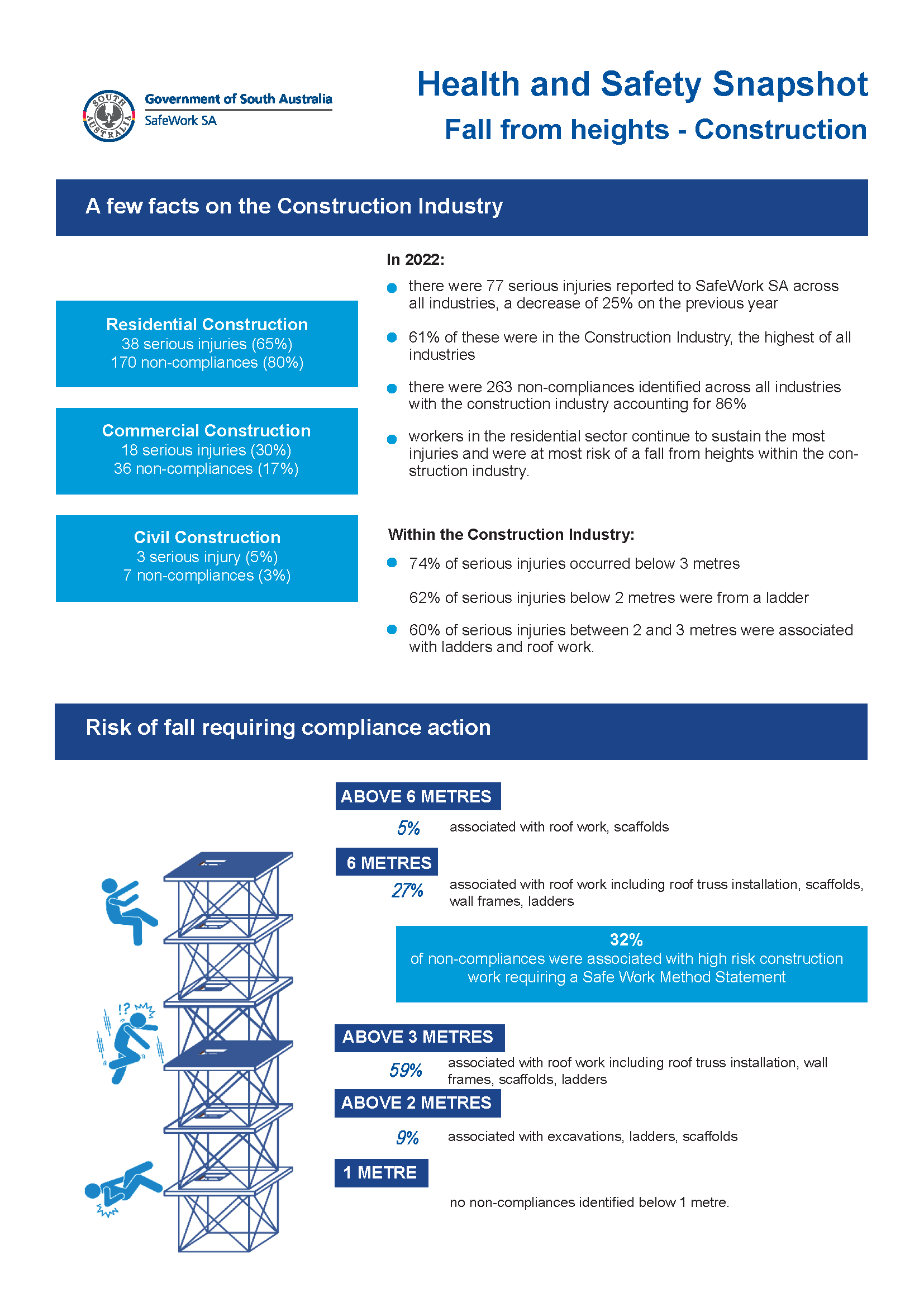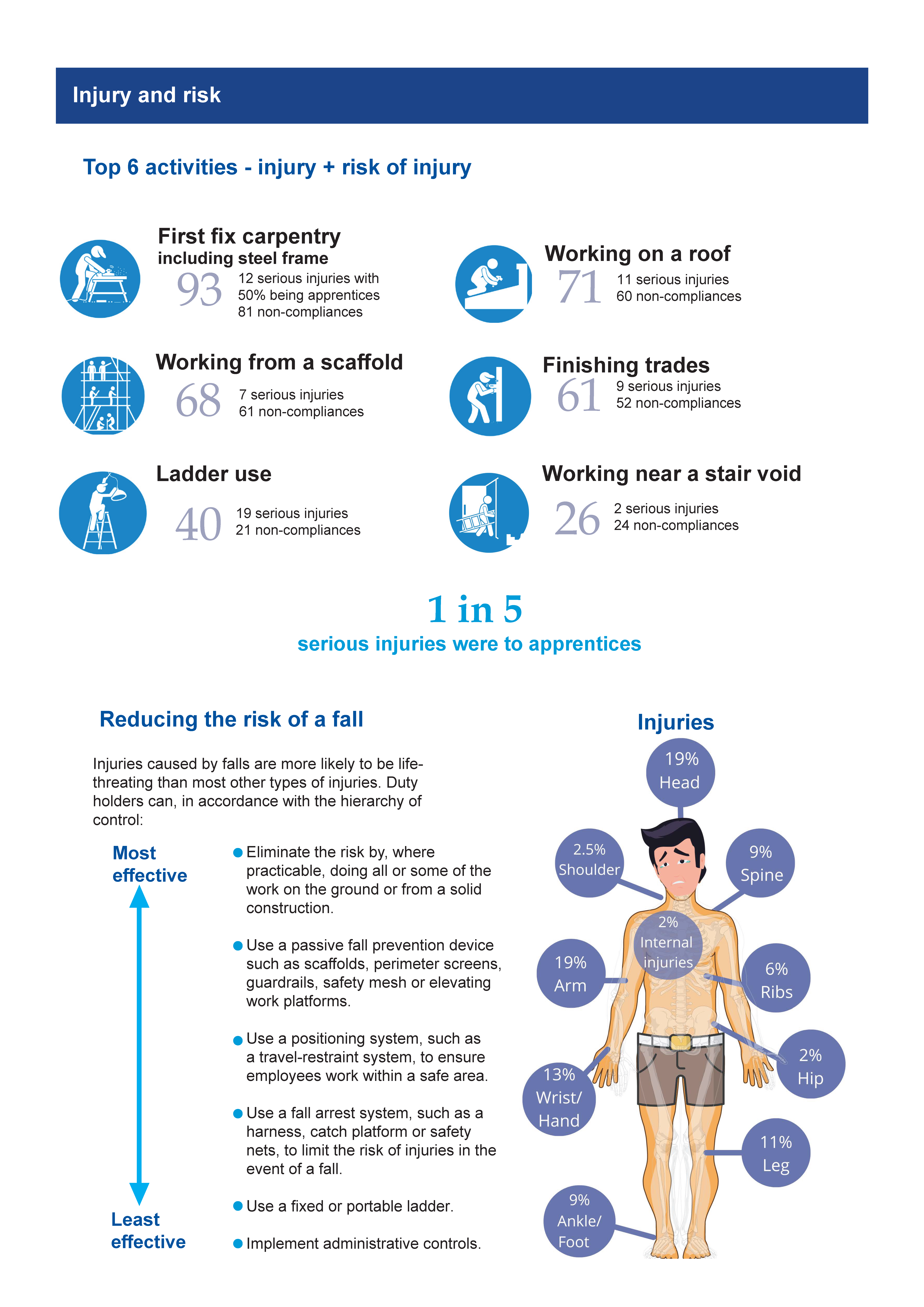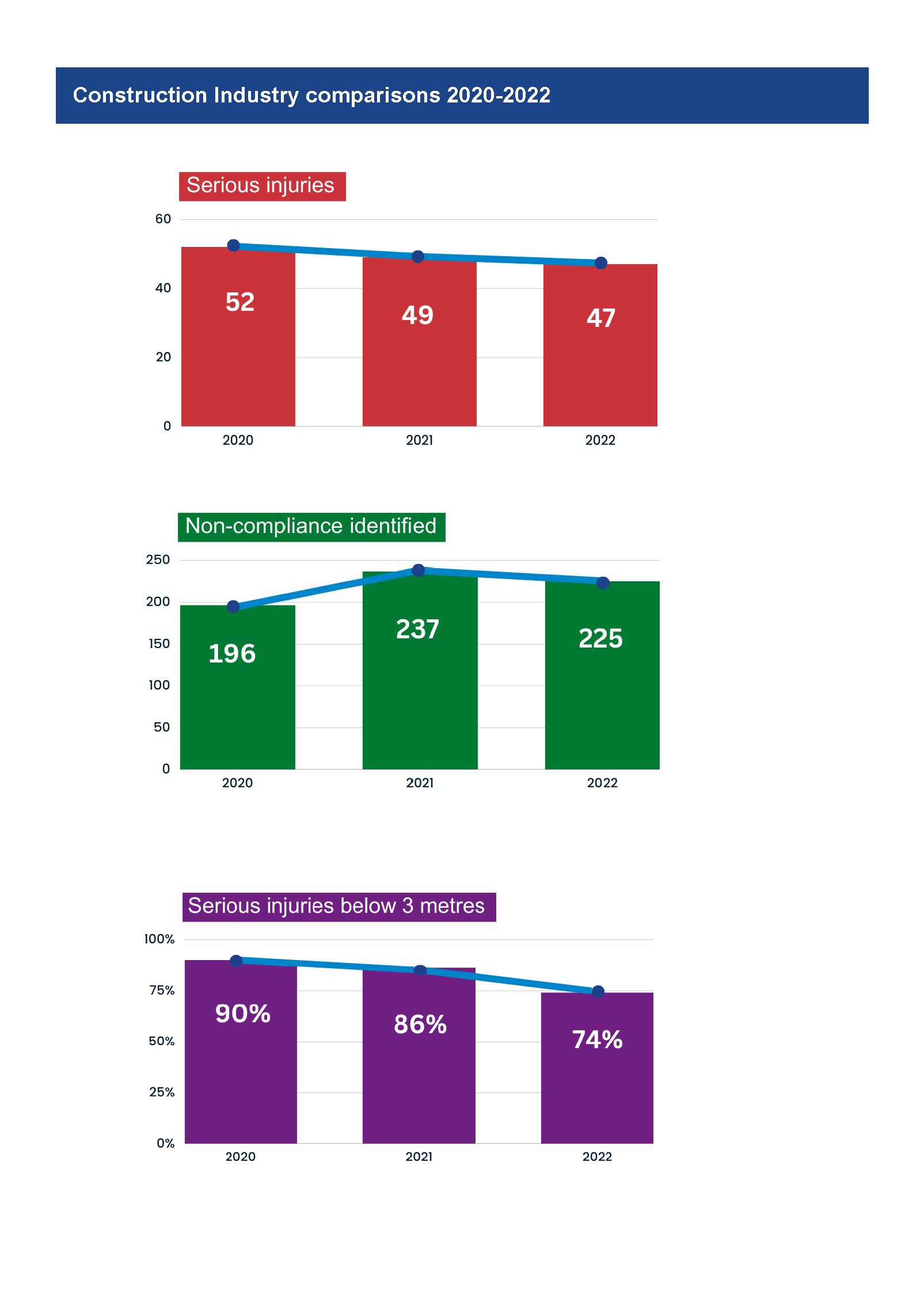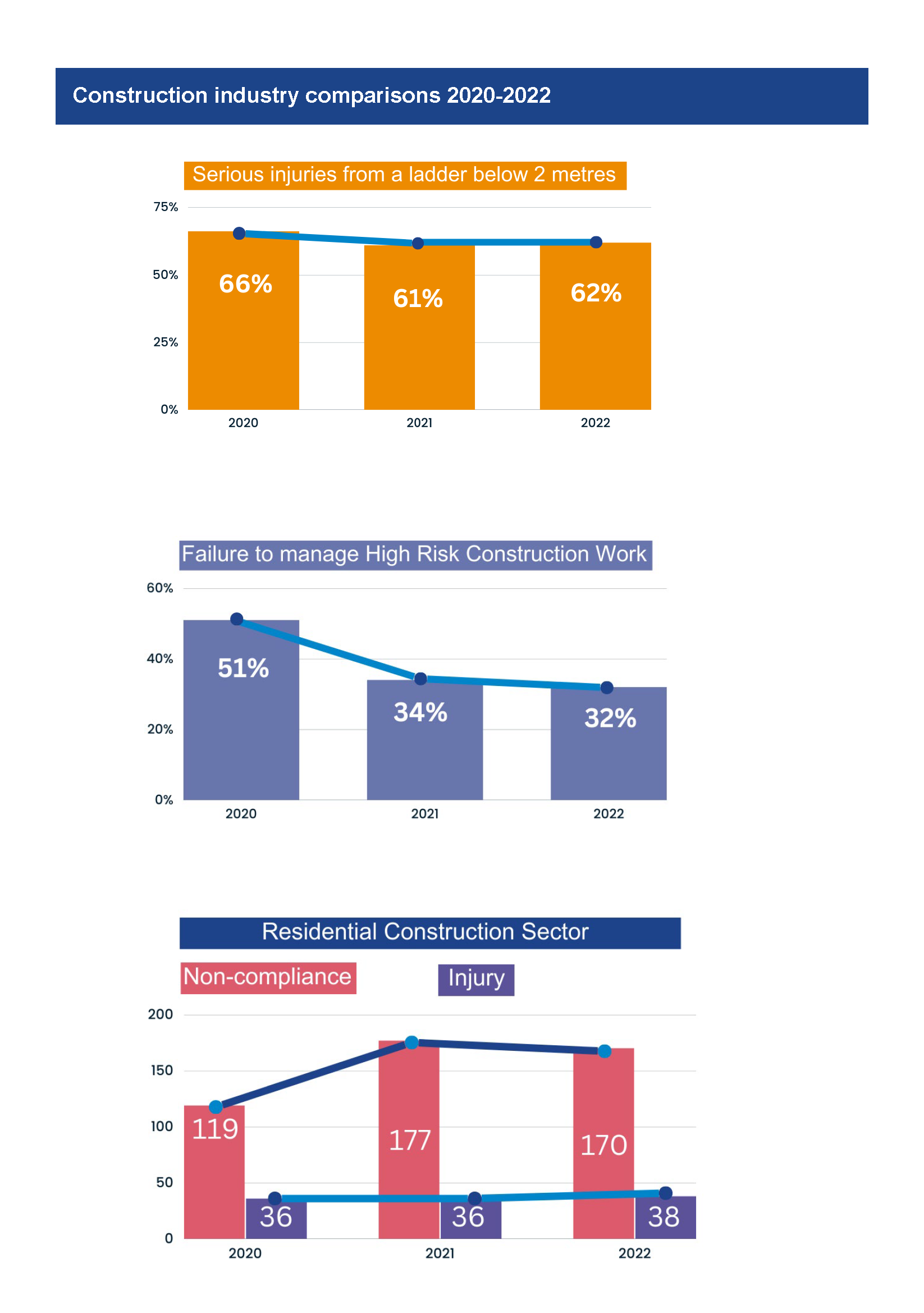Did you know half of all falls that resulted in a fatality involved heights of 3 metres or less? Slips, trips and falls are the second leading cause of workplace injury, after hazardous manual tasks.
These incidents are a significant problem affecting every workplace, from the factory floor to the office and quite often can result in serious injury and lengthy amounts of time off work.
Industries which experience the highest proportion of slips and trips are:
- manufacturing
- health and community services
- construction
- retail trade.
PCBUs, employers, managers and workers should refer to the Managing the risk of falls in the workplace - Code of practice.
Hazards and risks
Commons slip and trip hazards often arise from:
- the type and stability of the floor or ground surfaces such as uneven or broken concrete and sloping ground
- slippery floor surfaces caused by water, fluid spillage and oil
- equipment, boxes and materials blocking walkways
- stairs or steps
- carrying things that obscure the view ahead
- poor lighting
- inadequate or improper footwear
- incorrect use of ladders
- falling or moving objects
- distraction.
Fall hazards are often found where work is undertaken at heights such as:
- stacking shelves
- working on a roof
- unloading a large truck
- accessing a silo.
Falls can also occur at a ground level as a result of a slip or trip or falling into a hole such as a service pit or open hatch.
Employers and PCBUs have a duty of care to provide a safe workplace and systems of work, information, instruction and training. Additionally, they have to give workers an opportunity to consult about work health and safety, whilst being responsible for identifying hazards, assessing risks and managing the hazards also.
Worker responsibilities
- contribute to a safe workplace by taking responsibility for your safety and the safety of people you work with
- follow all safe work instructions and procedures
- report safety issues
- use safety gear (PPE) where required.
Falls from height
To minimise the risk of a fall from height a PCBU / employer must:
- be familiar with the Managing the risks of falls in the workplace - Code of Practice
- provide a safe means of access/egress to/from any area that involves the risk of a fall
- for the construction industry, prepare and implement a site specific High Risk Construction Work prepare a Safe Work Method Statement (for work at heights above 3 metres)
- ensure that any work that involves the risk of a fall is carried out on the ground or on a solid construction, so far as is reasonably practicable
- eliminate, where possible, or minimise the risk of a fall by providing adequate control measures
- maintain a safe system of work such as providing:
- temporary work platforms
- training in relation to the risks involved in work at the workplace
- safe work procedures including safe sequencing of work, safe use of ladders, permit systems and appropriate signs
- provide a fall prevention device (eg a secure fence, edge protection, working platforms and covers), where possible
- where a fall prevention device is not reasonably practicable, provide a work positioning system
- if it is not reasonably practicable to comply with either of the above, provide a fall arrest system
- fall arrest systems must be accompanied by an emergency and rescue procedure in relation to the use of the system.
Use a combination of controls to minimise risks if a single control is not sufficient for the purpose.
2022 snapshot - Falls from heights in the construction industry
Risk assessment
A risk assessment should be undertaken to determine the level of risk and appropriate controls. This gives the PCBU the opportunity to discuss issues and negotiate suitable arrangements for reducing slips, trips and falls.
An important part of the risk management process is to have good communication and consultation between PCBUs, workers, health and safety representatives and committees. Doing so will help to identify hazards before any injury, illness or incident can occur. This then leads to developing measures to eliminate or reduce the associated risks.
As workers, you have a responsibility to protect your own health and safety along with others affected by the work, whilst also abiding by procedures and policies in relation to workplace safety. It is necessary for all workers to have important information and training to allow them to fulfil this obligation.
Risk control measures
Often, it is the little things that cause slipping, tripping and falling to happen in the first place, so it is important to remember to work together. There are several ways to help minimise these incidents occurring, such as:
- maintaining good house-keeping protocols, including rubbish removal
- storing equipment correctly
- using ladders and steps correctly
- reporting damage to floors and surfaces
- clearly identifying and staying on marked walkways
- implementing a clean and clear walkway policy
- affixing mats to the floor surface
- restricting access to areas that are potentially hazardous
- providing ramps instead of steps where the height of floor levels change
- restricting tasks to suitably trained workers
- providing adequate aisle width and lighting
- using warning signs.
Managing risk of falls video series
Our four-part educational video series will help business operators manage the risk when working at heights and assist them to comply with their work health and safety responsibilities.
Remember, controlling falls risks is the only option.
Falls from heights
Managing the risk of fall from one level to another that is likely to cause injury in line with the hierarchy of risk controls.
Hierarchy of risk controls
Sets out the order of managing risks when working from heights and the equipment and systems to match.
Safe use of portable ladders
Practical tips on how to use portable ladders correctly.
Training and supervision
The importance of training and supervision to ensure safe work practises are being followed.








